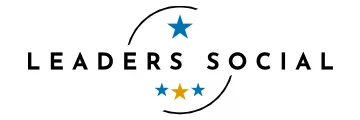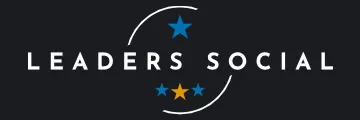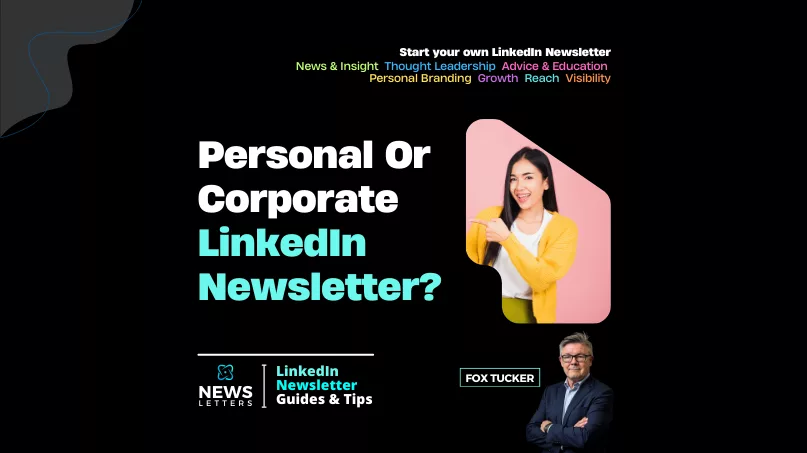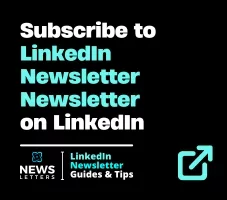Corporate and personal LinkedIn newsletters both offer opportunities to grow an audience, but their goals and strategies often differ. Knowing these differences will help you choose the best format for your needs.
The First Thing To Know
Personal LinkedIn Newsletters are operated through your personal LinkedIn Profile. It’s permanently tied to your personal LinkedIn Account. You can use a ghostwriter to assist with creating the content, but it is you that will load up and publish the content.
Eligibility: All LinkedIn members have access to create a newsletter on LinkedIn.
Under no circumstances should you give anyone access to your personal LinkedIn account. It goes against LinkedIn Terms of Use, and can result in your account being restricted or removed.
Corporate LinkedIn Newsletters are operated through, and permanently tied to, a LinkedIn Company Page. The person(s) or agency that runs the company page on behalf of your organisation are the same people that will create and publish the LinkedIn Newsletter.
You assign and withdraw permission to an agency or people as and when needed. This is useful if you change agency or people leave your organisation.
Eligibility: There are required criteria shown below.
You are not able to transfer LinkedIn Newsletters. So choose wisely.
If you’re stuck, you can Book a 30 minute Q&A & Consultation Session.
Corporate LinkedIn Newsletters: Focus on the Brand
Corporate newsletters are built around the company’s brand and message. They are designed to communicate key updates such as product launches, industry news, and company achievements. The tone tends to be professional, but it should still reflect the company’s personality.
Corporate newsletters can also be shared / reposted by employees to significantly increase reach.
Eligibility: Pages must meet the following criteria to create a newsletter:
A history of abiding by our Professional Community Policies:
Only Pages and their admins that have a good standing record will be considered for Newsletters access.
Audience baseL
Pages with more than 150 followers and/or connections are eligible to be evaluated for LinkedIn Newsletters access.
Recent shares of original content (any type):
LinkedIn look for Pages who have experience creating original content on LinkedIn (For example, creating posts with text, images, or videos, publishing articles, etc.) to evaluate if they will be able to make the most of LinkedIn Newsletters.
Key Characteristics of a Corporate LinkedIn Newsletter:
- Audience: Customers, clients, partners, industry professionals.
- Content: Company news, product updates, thought leadership pieces tied to industry trends.
- Tone: Professional but aligned with the company’s brand voice.
- Purpose: Build brand credibility, engage customers, position the company as a leader in the market.
Example: A tech company might use its LinkedIn newsletter to share updates on new product features, customer success stories, and expert insights on industry trends, positioning itself as a thought leader.
Personal LinkedIn Newsletters: Focus on the Individual
In contrast, personal newsletters are driven by the individual’s voice and personal brand. These newsletters often share personal experiences, advice, or perspectives on industry topics. The tone is usually more informal and conversational, making it easier to build a closer connection with readers.
Key Characteristics of a Personal LinkedIn Newsletter:
- Audience: Professional connections, followers interested in your personal expertise.
- Content: Personal experiences, opinions, tips, and industry knowledge.
- Tone: Conversational and personal, allowing for more flexibility in how you communicate.
- Purpose: Build thought leadership, engage with followers, and share personal insights.
Example: A consultant might use their LinkedIn newsletter to share lessons from their professional journey, offering advice on navigating challenges in their field. This positions them as approachable and knowledgeable.
Choosing the Right Approach
When deciding between a corporate or personal LinkedIn newsletter, consider your primary goals. If you’re looking to strengthen your personal brand and connect with your professional network, a personal newsletter is ideal. If your focus is to enhance your company’s visibility and credibility, a corporate newsletter is the way to go.















